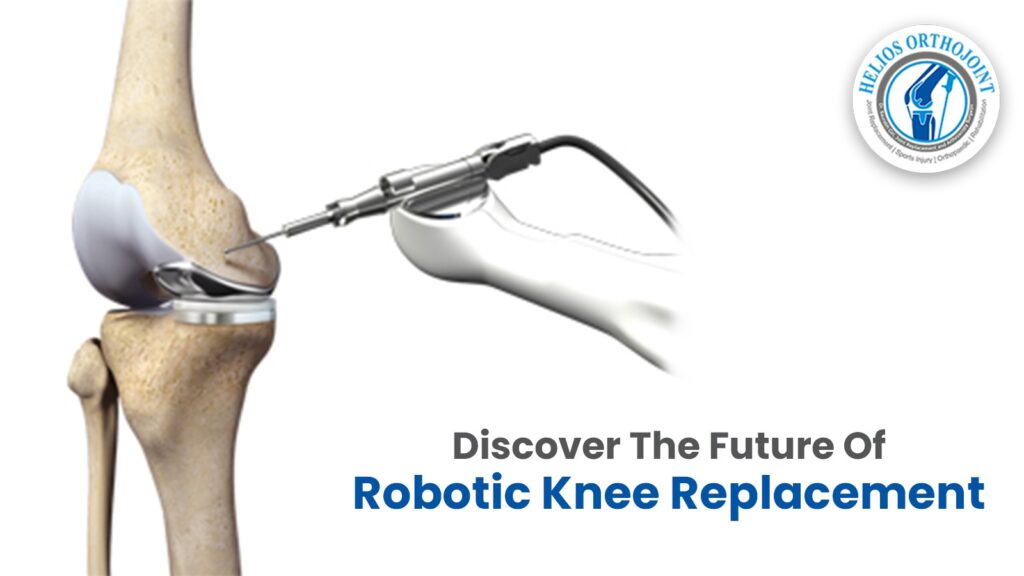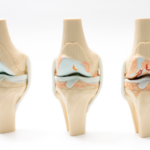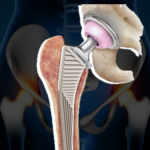
Introduction:
Robotic knee replacement is one area of orthopedic surgery that holds enormous promise as a result of medical technology advancements. In this innovative procedure, skilled surgeons’ knowledge is combined with the accuracy and precision of robotic systems. This blog explores the potential for robotic knee replacement to change the lives of people with knee conditions. We will delve into the future of robotic knee replacement.
How Knee Replacement Surgery Has Changed Over Time:
For patients with degenerative knee joints, traditional knee replacement surgery has a long history of success in reducing pain and enhancing functionality. Robotic knee replacement, on the other hand, elevates this procedure to entirely new heights. It combines cutting-edge robotic technology with in-the-moment imaging to give surgeons access to previously unheard-of levels of precision and accuracy.
Robotic precision unleashed
The unmatched precision provided by robotic knee replacement is one of its main benefits. Before making a single incision, robotic systems enable surgeons to meticulously plan the surgery by building a detailed 3D model of the patient’s knee. The robotic arm serves as a millimeter-level extension of the surgeon’s hand during the procedure, guiding surgical instruments precisely. This level of accuracy improves implant positioning, alignment, and surgical results as a whole.
Better Patient Results:
The potential for improving patient outcomes with robotic knee replacement is enormous. Greater surgical accuracy lowers the possibility of issues like implant misalignment, instability, and early wear. Patients can anticipate improved long-term outcomes, reduced post-operative discomfort, and a quicker return to normal activities. A robotic knee replacement may also result in shorter hospital stays, which would enable patients to regain their independence and mobility sooner.
Superior Customization
Due to the individual nature of each patient’s knee joint, robotic knee replacement offers a specialized approach to care. Surgeons can achieve the best implant positioning and alignment by developing a thorough preoperative plan based on the unique anatomy of the patient. Better joint function, increased range of motion, and higher patient satisfaction are all guaranteed by this customization.
Maintaining Innovation
Continuous research and innovation are essential to determine how the field of robotic knee replacement will develop in the future. Technology is constantly being improved, robotic navigation is being honed, and imaging techniques are being improved. A further development that could lead to even more specialized and precise treatment options is the incorporation of artificial intelligence (AI) algorithms.
Conclusion:
Robotic knee replacement has the potential to revolutionize orthopedic surgery and vastly enhance the quality of life for people with knee conditions. This ground-breaking procedure is revolutionizing orthopedics by fusing the knowledge of experienced surgeons with the unmatched precision and customization provided by robotic systems.
Surgeons now have access to a level of precision made possible by robotic knee replacement. Surgeons can achieve ideal implant positioning and alignment through meticulous preoperative planning and the use of robotic arms guided by millimeter-level accuracy, improving surgical outcomes and long-term functionality.
Robotic knee replacement patients can anticipate better outcomes, such as less pain, a quicker recovery, and a quicker return to normal activities. Robotic surgery uses an individualized approach to make sure that each patient’s anatomy is taken into account, improving joint function, extending the range of motion, and increasing patient satisfaction.
Research and innovation must continue as the field of robotic knee replacement develops. The incorporation of artificial intelligence algorithms and improved robotic navigation, for example, hold great promise for improving surgical procedures and offering even more specialized and efficient treatment options.
At the forefront of this transformative technology is Helios Orthopedics, a leading provider of robotic joint replacement solutions. With their commitment to innovation and patient-centered care, Helios Orthopedics is driving the advancement of robotic knee replacement, helping individuals regain mobility, and enhance their overall quality of life.
The future of robotic knee replacement is bright, offering new possibilities for improved surgical precision, faster recovery, and enhanced patient outcomes. With the continued dedication to research and innovation, coupled with the expertise of surgeons and innovative technologies like Helios Orthopedics, we can look forward to a future where robotic knee replacement becomes the gold standard in orthopedic surgery, empowering individuals to live their lives to the fullest with healthy and pain-free knees.




